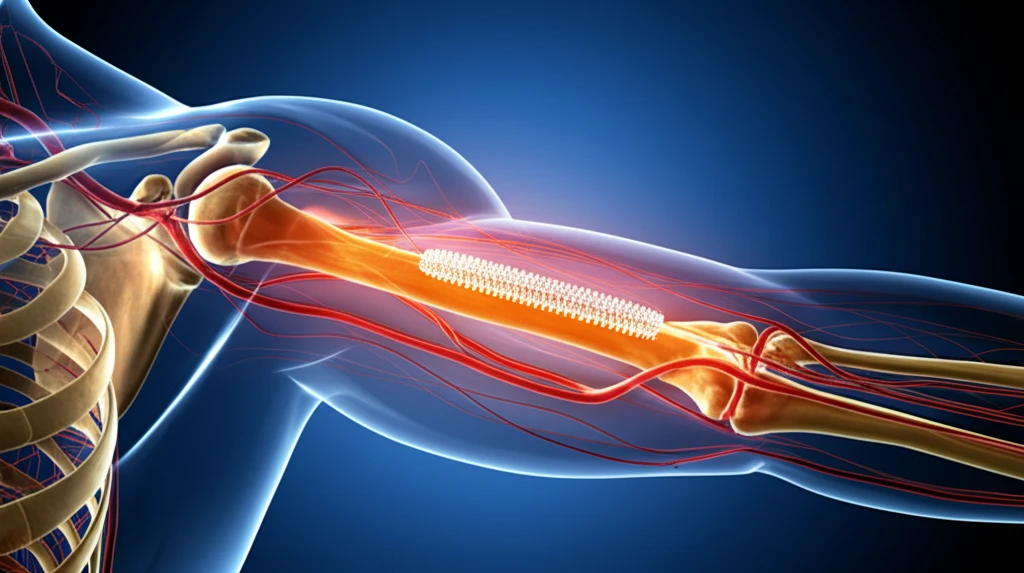
Healing Hands: How Stents are Revolutionizing Upper Limb Trauma Treatment
"Discover how endovascular stenting offers a minimally invasive solution for complex arm fractures and vascular injuries, restoring hope and mobility."
Upper arm (humerus) fractures accompanied by damage to the brachial artery are thankfully rare, but when they occur, they present a significant challenge. The brachial artery is the main blood vessel supplying the arm, and any injury can lead to severe complications, including limb-threatening ischemia (lack of blood flow). Traditionally, open surgical repair has been the standard approach to restore blood flow, but a newer technique called endovascular stenting is emerging as a less invasive alternative.
Endovascular stenting involves inserting a small, mesh-like tube (stent) into the damaged artery through a small incision, typically in the groin. The stent is then guided to the site of the injury and expanded, opening up the artery and restoring blood flow. This minimally invasive approach offers several potential benefits over open surgery, including smaller incisions, less pain, and faster recovery times.
This article explores the innovative use of stents to address complex cases of upper arm fractures coupled with arterial injuries. By examining a specific case study and delving into the broader implications of this technique, we aim to shed light on how this approach can revolutionize trauma treatment and improve patient outcomes.
The Case for Stents: A Minimally Invasive Revolution

The traditional treatment for a damaged brachial artery during an upper arm fracture typically involves open surgery to repair the artery. However, in recent years, endovascular stenting has emerged as a promising alternative. This minimally invasive approach has several advantages:
- Minimally Invasive: Stenting requires only a small incision, reducing trauma to surrounding tissues.
- Faster Recovery: Patients often experience less pain and a quicker return to function compared to open surgery.
- Reduced Risk: Stenting can minimize the risk of complications associated with extensive surgery.
Looking Ahead: The Future of Stent Technology
Endovascular stenting shows great promise in treating brachial artery injuries associated with upper arm fractures. As technology advances and techniques refine, this minimally invasive approach has the potential to become a preferred method, offering patients improved outcomes and a faster return to their active lives. Further research is needed to determine the long-term effectiveness of stenting compared to open surgery and to identify the ideal candidates for this treatment.
